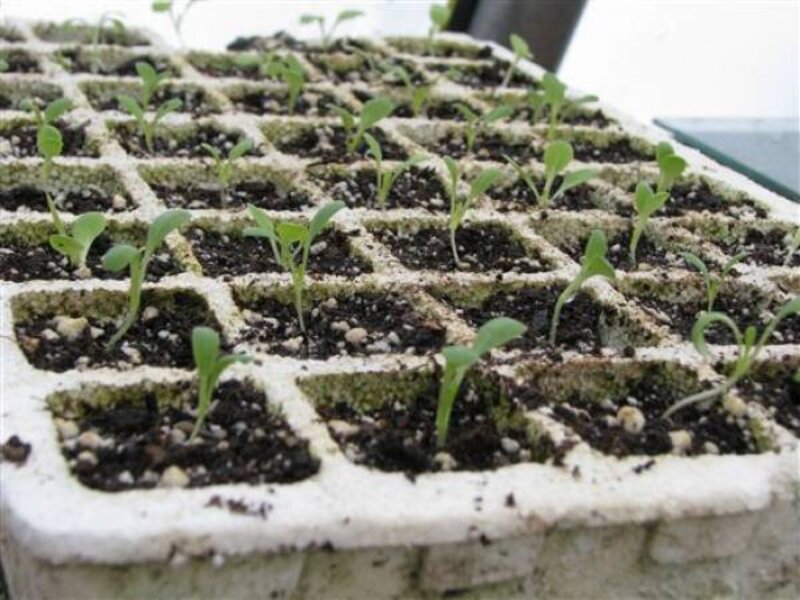Growing your own vegetable transplants
Loading...
If this were spring 100 years ago and I were a wealthy Victorian, how lush my large greenhouse would now be with tomato, lettuce, marigold, zucchini, and zinnia seedlings.
Well, perhaps not zucchini seedlings, because I'm never all that hungry for the first fresh zucchini of the season.
But I'm not a wealthy Victorian with thousands of square feet of greenhouse at my disposal. Using windows, "grow lights," and perhaps a small greenhouse, modern gardeners do not have the space for growing all the garden transplants they desire.
Today, we have to be more selective in choosing just which flowers and vegetables are worth growing as transplants.
WHAT'S NOT WORTH STARTING INDOORS
Besides zucchini, there are other transplants I do not consider worth growing because they are not favorites, or because they "show their colors" long after my hunger for the very first colors and flavors from the garden have dulled.
I love winter squash, but it isn't worth eating until fall or winter anyway. Why rush it?
Giant sunflowers, also. Their sunny heads cheer up any garden, but even transplanted ones won't open until well into summer.
Try to limit transplants to those vegetables and flowers for which you really want to get a jump on the season.
Also, don't sow indoors any plants that are almost impossible to transplant. Mostly, these are root crops — carrots, parsnips, turnips, and so on — and the reason they are so hard to transplant is obvious: Their roots want to go straight down deeply, deeper than your average seed flat, before they swell. Any disturbance, and the plants die or yield deformed roots.
With some vegetables, individual plants yield too little to justify growing them as transplants. Think about how few pods you harvest from just one pea plant, or one bean plant. Remember, when you plant peas or beans out in the garden, you place the seeds only about 2 inches apart down the row.
WHAT MAY BE WORTH STARTING INDOORS
All sorts of stores — from discount to hardware to grocery stores — have broccoli, cauliflower, marigold, impatiens, and zinnia plants available when it is time to set these vegetables and flowers out in the garden.
I'm not saying there is no difference between one variety of broccoli or marigold and the next, but is it enough to justify the space to raise your own transplants? If you have the space, by all means grow your own; if not, buy them.
WHAT'S DEFINITELY WORTH STARTING INDOORS
What we are now left with is the "must grow yourself" list.
Start with lettuce: It grows quickly and can be transplanted soon, so takes up indoor growing space for only a short while. I have two months' worth of lettuce transplants growing in about a square foot of space. I sowed them indoors about a month ago, and plan to set them outside any day now.
Cucumbers and melons also are worth growing as transplants for northern gardeners, or anyone anxious for those very first cukes or melons of the season. You don't need to sow cucumber or melon seeds until about a month before you set out the transplants, so they take up space for only a short while. And just a few plants are needed.
Pepper transplants need much longer to grow, almost two months, but again, a few plants yield a lot of peppers, and variety choice is important when it comes to yield and flavor.
Without fail, do grow your own tomato transplants. Varieties typically offered for sale are good, but not necessarily the best. Tomato transplants are easy to grow and need to spend only about a month indoors. My favorite varieties include Sungold and Suncherry in cherry tomatoes; Belgian Giant, Dona, Carmello, and Valencia in full-size tomatoes; and San Marzano in cooking tomatoes.
Start seeds about six weeks before the average date of the last killing frost in your area.
-----
To read more about gardening, see the Monitor's main gardening page and our lively gardening blog, Diggin' It. Both of these have new URLs, so we hope you'll bookmark them and return. Want to be notified when there's something new in our gardening section? Sign up for our RSS feed.





